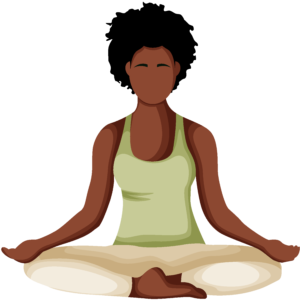Lotus (Padmasana)
Pose Overview
| Common Name | Lotus |
| Traditional Sanskrit Name | Padmasana |
| Sanskrit Name Pronunciation | Pahd-mah-sah-na |
| Pose Difficulty | Intermediate |
| Drishti
Drishti is the gaze or visual focus point during yoga poses.
Learn more about Drishti |
Straight ahead or the nose |
Lotus Pose, also known as Padmasana in Sanskrit, is a traditional seated yoga posture that is often used as a meditation seat in many spiritual practices. The pose is believed to have originated in ancient India and is one of the most recognizable yoga poses. It is also one of the most challenging poses for many people due to the flexibility required in the hips and knees. The Lotus Pose is said to have many benefits including promoting balance and flexibility, as well as calming the mind and promoting a sense of inner peace.
Benefits of Lotus
Promotes balance and flexibility in the hips and knees Calms the mind Promotes a sense of inner peace
How to Enter Lotus
Start by sitting on the floor with your legs extended out in front of you. Bend your right knee and bring the right foot to rest on the left thigh. The sole of the foot should be facing upwards and the heel should be close to the abdomen. Bend your left knee and bring the left foot to rest on the right thigh. The sole of the foot should be facing upwards and the heel should be close to the abdomen. Sit up straight and engage your core. Place your hands on your knees and breathe deeply.
How to Exit Lotus
Slowly release your left foot from the right thigh and extend your left leg out in front of you. Slowly release your right foot from the left thigh and extend your right leg out in front of you. Sit up straight and take a few deep breaths.
Common Lotus Modifications & Variations
If you are unable to sit with your legs crossed, you can sit with your legs stretched out in front of you. If you have difficulty sitting with your back straight, you can sit with a bolster or block behind your back for support.
Common Mistakes with Lotus
Not sitting up straight Not keeping your spine aligned Placing too much weight on your feet
Safety Guidance
If you have knee or ankle injuries, be careful when entering and exiting the pose. If you have tight hips or knees, be sure to warm up before attempting the pose.

